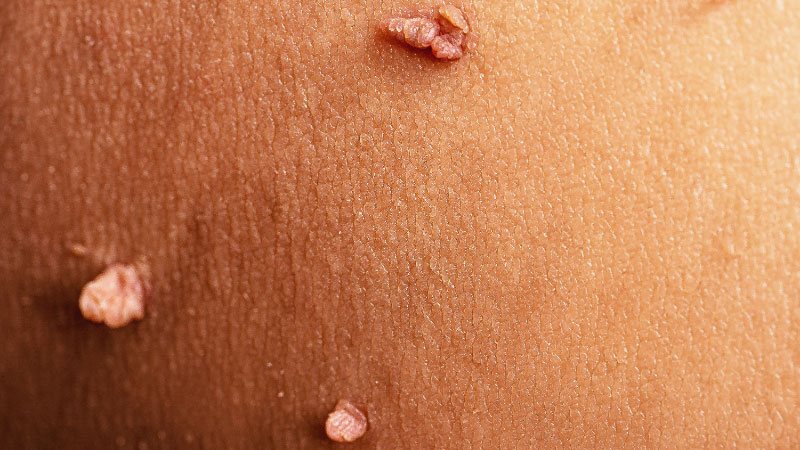Genital warts are a manifestation of the Human Papilloma Virus (HPV), which can be transmitted and spread through sexual contact or skin-to-skin contact. These warts can appear on both genders as raised or flat lesions, light or dark brown in color, sometimes appearing as spots. They can be solitary or multiple, resembling a cauliflower when clustered together. In some cases, warts can be mistaken for skin tags or may not be noticed at all. They can cause itching or lead to bleeding during sexual intercourse.

Symptoms of Genital Warts
Genital warts may be too small to show any symptoms or not raised above the skin. Generally, the symptoms of genital warts include:
- Raised lesions in the genital area, usually the same color as the skin, can be a symptom of genital warts.
- In individuals with a weakened immune system, wart-like bumps resembling cauliflower can be a symptom.
- Itching and discomfort in the genital area are among the symptoms of genital warts.
- Pain and bleeding during intercourse can occasionally be symptoms of genital warts.
- In men, a bifurcation of the urine stream can be a symptom of genital warts.
Causes of Genital Warts:
Genital warts are caused by the Human Papilloma Virus (HPV). There are over 200 types of HPV, but only about 40 of these types cause genital warts. The most commonly observed types causing genital warts are HPV 6 and HPV 11.
Risk factors for genital warts include:
- Unprotected sexual intercourse with multiple partners.
- Having a sexually transmitted infection.
- Engaging in sexual activities at a young age.
- Use of immunosuppressive medications can increase the risk of genital warts.
How are Genital Warts Transmitted?
Genital warts are generally transmitted through unprotected sexual intercourse but can also be transmitted through direct skin-to-skin contact with someone who has HPV. Genital contact or close skin contact is sufficient for the transmission of genital warts. Warts may not always be visible on the skin. Genital warts can be transmitted from individuals who carry HPV but do not show visible warts.
Genital warts are not transmitted through:
- Kissing.
- Hugging.
- Swimming pools.
- Sharing towels.
- Using common items.
Diagnosis of Genital Warts
The diagnosis of genital warts typically involves:
Examination by a specialist in Gynecology and Obstetrics. A skilled doctor can diagnose warts based on their appearance.
A pelvic examination may be necessary if warts are in areas not visible. An acid-based solution might be used during the examination to make the warts more apparent.
Additional tests may be required to confirm the diagnosis. A sample taken with a cotton swab from the suspicious area can be tested.
HPV and Pap smear tests should be conducted to facilitate the treatment by identifying the HPV type. However, there is no HPV test available for men yet.
A device called a colposcope may be used to magnify and examine potential warts in the vagina and cervix, making treatment easier. These tests are mostly applicable to women over the age of 30.
Do Genital Warts Go Away on Their Own?
Genital warts can disappear on their own or with treatment, but in some cases, they may persist for years even after treatment. While some patients may see their warts disappear over time, treatment methods can expedite this process. However, even if the warts go away on their own, HPV can still remain in the body.
Treatment Methods for Genital Warts:
The choice of treatment for genital warts varies depending on the size of the lesion.
Treatment options for genital warts include:
- Surgical removal of the warts.
- Destruction of the lesions with cautery or laser.
- Freezing the warts with cryotherapy.
If the lesion is located in the anal area, examination inside the anal region by a general surgeon is necessary. If the lesion is in the mouth, examination by an Otolaryngologist (ENT doctor) is required.
Genital wart cream can be used to alleviate the symptoms caused by warts, based on a doctor’s recommendation. It’s important to note that creams used for warts on other parts of the body are different from those used for genital warts, and creams for warts elsewhere do not contribute to the treatment of genital warts.

